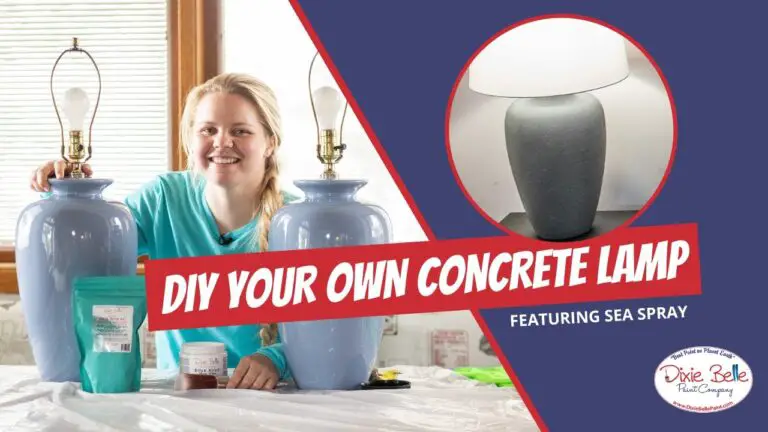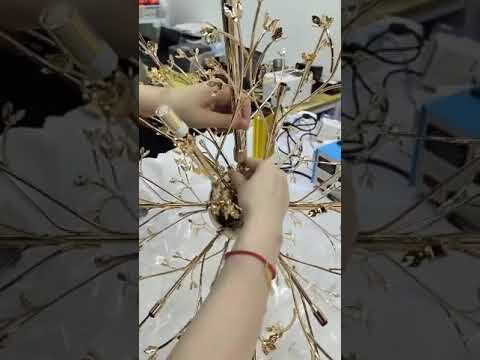Looking to add some depth and character to your home decor? Look no further than these innovative techniques for adding texture to lamps. From intricate hand-painted designs to tactile materials like rattan and jute, these creative ideas will elevate any room with a touch of personality and style. Say goodbye to boring, plain lamps and hello to a world of texture and visual interest.
- Use materials such as fabric, rope, or beads to create a textured surface on lampshades.
- Experiment with painting or stenciling patterns onto lamp bases for added texture.
- Incorporate natural elements like wood or stone into the design of the lamp for a tactile feel.
- Consider using techniques such as embossing or decoupage to add texture to lamp surfaces.
How can I give a lamp an aged appearance?
Transform a modern lamp into a vintage masterpiece with a few simple tricks. By lightly brushing on diluted beige paint and strategically applying damp dirt, you can achieve a weathered look that will give your lamp an aged appearance. These techniques are easy to do and can give your lamp a touch of character and charm.
With just a few steps, you can easily make your lamp look old and add a touch of rustic elegance to your space. Experiment with brushing on diluted beige paint and dabbing on damp dirt to achieve a worn and weathered effect. These simple techniques will give your lamp a beautiful vintage look that will make it stand out in any room.
How can a lamp be embellished?
To embellish a lamp, consider adding decorative elements such as beads, crystals, or ribbons. You can also paint the base or shade in a bold color or pattern, or attach a unique fabric to the shade for a custom look. Additionally, using a decorative finial or upgrading the lamp’s hardware can add a touch of elegance and style. Experiment with different textures and materials to create a personalized and eye-catching design that perfectly complements your space.
How can fabric be used to cover a lamp?
To cover a lamp with fabric, start by measuring the height and circumference of the lampshade. Cut the fabric to the appropriate size, leaving an extra inch at the top and bottom for overlap. Apply fabric glue or use a hot glue gun to secure the fabric to the lampshade, starting at the seam and working your way around. Smooth out any wrinkles or bubbles as you go, and trim any excess fabric at the top and bottom. Finally, allow the glue to dry completely before placing the lampshade back onto the lamp.
Covering a lamp with fabric is a simple and creative way to update the look of a room. By following these easy steps, you can transform a plain lampshade into a stylish and personalized piece that complements your decor. Whether you choose a bold pattern or a neutral fabric, this DIY project is a budget-friendly way to add a touch of elegance and individuality to any space.
Enhance Your Designs with Proven Texture Techniques
Are you looking to elevate your design projects to the next level? Look no further! By incorporating proven texture techniques, you can add depth and dimension to your creations, making them truly stand out. From subtle patterns to bold textures, there are endless possibilities to enhance your designs and captivate your audience.
Texture techniques not only add visual interest to your designs, but they also create a tactile experience for viewers. Whether you are working on a website, logo, or print materials, incorporating textures can help bring your designs to life and make them more memorable. So why settle for flat and uninspired designs when you can take them to the next level with the power of textures? Start experimenting today and see the difference it can make in your projects.
Elevate Your Artwork with Expert Lamp Texture Tips
Are you looking to add depth and dimension to your artwork? Elevate your pieces with expert lamp texture tips that will take your creations to the next level. By incorporating various lighting techniques, such as cross-hatching and stippling, you can create realistic and dynamic textures that will bring your artwork to life. Experiment with different angles and intensities of light to achieve the perfect balance of highlights and shadows, adding depth and interest to your pieces. Whether you’re a seasoned artist or just starting out, these lamp texture tips will help you elevate your artwork and create stunning, eye-catching pieces that will captivate your audience.
Transform your artwork with the help of expert lamp texture tips that will bring a new level of sophistication and detail to your pieces. By mastering the art of creating realistic textures using light and shadow, you can add depth and dimension to your artwork that will truly make it stand out. With the right techniques, such as blending and layering, you can create intricate and captivating textures that will draw the viewer in and leave a lasting impression. Elevate your art to new heights with these expert lamp texture tips, and see the difference it makes in the quality and impact of your creations.
Incorporating texture into lamp design can elevate the overall aesthetic of a space, adding depth and visual interest. By utilizing techniques such as embossing, etching, or layering materials, designers can create unique and captivating pieces that enhance the ambiance of any room. Whether it’s through the use of natural materials like wood and stone, or through more intricate methods like hand-painted details or intricate metalwork, adding texture to lamps is a creative way to make a statement in interior design. It’s these small details that can truly transform a space and make it feel complete.



